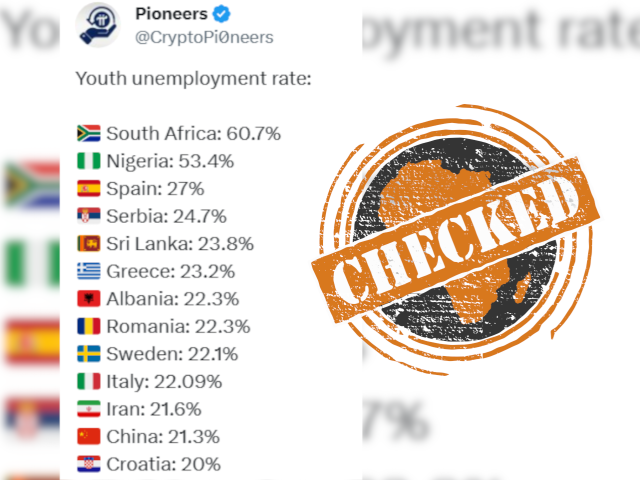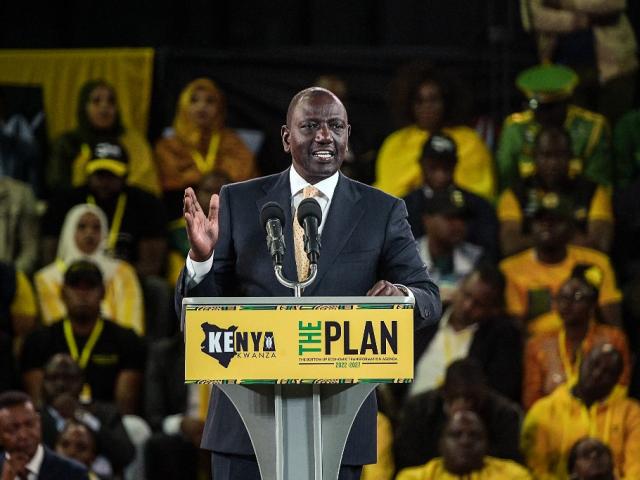-
Ruto is right that the budget for the judiciary has increased by KSh3 billion a year under his watch.
-
But he misled on the cost of the staple food, maize flour, and understated by KSh1.8 billion how much Kenya’s public universities are in debt.
-
The president was wildly off the mark when it came to how many more Kenyans were enrolled at teacher training colleges and we could find no proof for his claim that his administration has employed 20,000 new healthcare workers.
On 9 November 2023, Kenyan president William Ruto delivered his state of the nation address in parliament.
Seeking to show progress amid a gloomy economic outlook, Ruto told lawmakers that his government had been working on an “urgent transformation” of the country.
He listed the steps he had taken to boost the economy, create jobs, reform health and agriculture and to improve governance.
We looked at five claims he made. We contacted State House spokesperson Hussein Mohamed for the president’s evidence for the claims and will update this report when we hear back.
Ruto said that this was one of the first steps he took on his “first day on duty”.
In his inauguration speech on 13 September 2022, Ruto pledged to increase the budget for the Kenyan judiciary by KSh3 billion a year over the next five years.
The budget process is the responsibility of the national assembly. All money is spent according to the Appropriations Act, the law that authorises the withdrawal of public funds.
Ruto’s predecessor Uhuru Kenyatta signed the bill into law on 21 June 2022, and it came into effect on 1 July. The appropriations law allocated KSh16.4 billion (about US$141 million then) to the judiciary and KSh587 million to the Judicial Service Commission (JSC), the administrative arm of the judiciary.
In February 2023, the national assembly’s budget committee acknowledged an additional KSh2.84 billion for the judiciary to “cater mainly for operations and maintenance”. This increase from KSh16.4 billion to KSh19.23 billion was also recorded in the controller of budget's annual report for 2022/23.
The JSC also received an increase of KSh300 million, from KSh590 million to KSh800 million. The total increase for the judiciary in that financial year was therefore KSh3.13 billion.
On 26 June Ruto signed the latest appropriations law. This allocated KSh22.3 billion ($159 million) to the judiciary, with KSh20.4 billion for recurrent expenses and KSh1.85 billion for capital expenditure.
This is an increase of KSh3.1 billion over the 2022/23 budget. The JSC received KSh896 million.
The judicial budget has increased by at least KSh6 billion in the last two fiscal years. We therefore rate this claim as correct.
Ruto has been under pressure to reduce the cost of living. In his speech, he cited changes in the price of maize flour, Kenya’s staple food, as an indicator that his plan to subsidise fertiliser and increase production was working.
To verify this claim, Africa Check checked with four supermarkets that stock a total of 14 brands of maize flour.
- At Carrefour supermarket, one of the largest supermarket chains in the country, we bought nine brands of flour, with the lowest priced at KSh132 and the highest at KSh270. However, the cheapest brand was on sale and usually sells for KSh179. Retailers often mark down the prices of fast-moving items closer to their expiry date to avoid wastage.
- At Naivas supermarket, another major chain, prices ranged from KSh157 to KSh270.
- And at Chandarana supermarket, prices ranged from KSh152 to KSh230, while at Quickmart, they were between KSh152 and KSh230.
A spot check the day after the speech by Citizen TV, the country's most-watched television station, showed that maize prices had not fallen as the president claimed. The station interviewed farmers who put the price of unmilled maize at between KSh100 and KSh170 for a two kilogram tin.
The president's figures do not reflect market prices. While some brands of maize flour are sold close to his lower price point, the highest prices are significantly higher than his band. We rate his claim as misleading. (See how we rate claims.)
Ruto said Kenya’s public universities were saddled with debt, and he had sat down with all the vice-chancellors to work out how to fund the institutions of higher learning.
A June 2023 report by the Presidential Working Party on Education Reforms showed that, as of December 2022, universities had outstanding bills of KSh61.8 billion. This figure was available to the president at the time of his speech, meaning he understated the debt.
The report said this was because universities had “been unable to raise adequate income to support their operations”.
Kenyan law has established the universities fund to manage funding for public universities. Africa Check reached out to the fund for the most recent figures. We’ll update this report when we hear back.
The sharp increase was due to “changes to the entry requirements for teacher training colleges”, Ruto said.
Kenya’s national statistics bureau publishes annual enrolment figures for teacher trainees in its flagship economic survey. Its most recent put their number at 17,984 in 2022 and 16,429 in 2021.
So a jump from 17,984 in the economic survey to 20,456 in the president's speech is an increase of 2,472 or 13.7%, not 300%. The president's figures are completely wrong.
Kenya has recruited 20,000 new healthcare workers, the president said.
In November 2022, the non-partisan Parliamentary Budget Office published a report detailing the cost implications of employing these workers over five years.
The figure also appeared in the February 2023 budget policy statement, in which the government said it wanted to “prioritise the employment of 20,000 health workers”. These included doctors, nurses, clinical officers, lab technologists and physiotherapists.
But we haven't seen any data to support the claim that the government has actually contracted these workers.
In December 2022, the health ministry informed the national treasury that the first phase of hiring 6,600 of 20,000 health workers was an “unfunded priority”.
In a press conference in April 2023, the Kenya Medical Practitioners Pharmacists and Dentists Union (KMPDU) demanded that a “budget should be set aside for annual recruitment of 20,000 additional healthcare workers as promised to Kenyans”.
In August, officials from KMPDU and the Kenya Union of Clinical Officers advocated for the recruitment of 12,000 health workers annually.
We rate this claim as unproven.








Add new comment